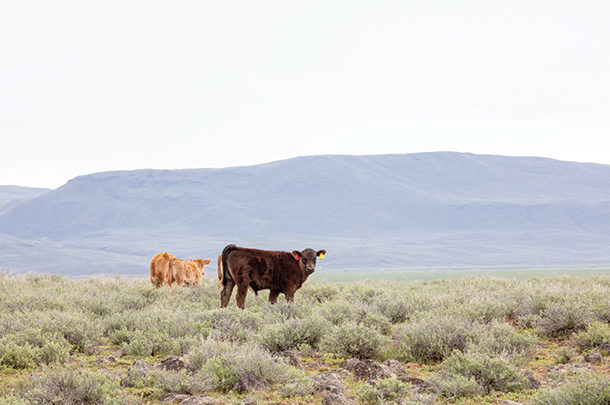May marks the beginning of the USDA Agricultural Marketing Service’s (AMS) inclusion of pasture and range conditions in its weekly state crop progress reports. This gives the industry its first barometer of how bad the drought could be this year across the U.S. to the overall industry and to specific geographic areas. The USDA-AMS reports pasture and range conditions in five categories: very poor, poor, fair, good and excellent.
Combing these conditions with state-level beef cow inventory numbers indicates that approximately 38.52% of beef cows in the U.S. (11.6 million) are in pasture or range that is currently rated as poor or very poor. The states with highest share of beef cows on very poor or poor conditions are Texas (10.99%), Nebraska (4.44%), Montana (3.84%), South Dakota (3.10%) and Oklahoma (2.75%).
Table 1 displays the top 15 states.

This certainly indicates there could be significantly lighter placement weights into feedlots as cow-calf producers run out of usable grass. The bind this year is: Feedlots will not have a lot of incentives to purchase lighter calves because of higher corn prices. Both could significantly reduce the price for feeder cattle in fall 2022.
Pasture rental rates in Nebraska
The market fluctuations have become more of an issue given the significantly higher cash rental rates the cow-calf nd stocker producers are facing over the last 15 years. The University of Nebraska – Lincoln Department of Agricultural Economics has been tracking these rental rates, on a price per cow-calf pair per month, by Agricultural Statistics District in Nebraska for the last 40 years. (See Nebraska Farm Real Estate Report for more information.) A cow-calf pair is typically considered to be 1.25 to 1.3 animal units (animal unit being 1,000-pound animal). However, this can vary depending on weight of cow and age of calf.
On average across all Agricultural Statistics District in Nebraska, the average rental rate for one month of summer grazing is expected to be $57.64 per cow-calf pair. All regions increased at relatively similar rates, except for the northwest portion of Nebraska, which has trended much lower than other locations. Using an average beef cow herd of 300 cow-calf pairs and a five-month grazing season, total pasture costs would conservatively be $86,460, not including additional mineral supplements or additional feed.
Flex lease on pasture
One difficulty with pasture rental rates is: They are relatively fixed within a given year and tend to trend over time. This benefits the landlord by providing a steady stream of income but is more detrimental to the cattle producer whose income varies given cattle market cycles and weather conditions.
Flexible grazing leases is one alternative becoming more popular among producers and landlords. Cow-calf pair per-month rental rates are allowed to flex within a predetermined range conditional on one or more market factors that reflect the underlying productivity of the land and/or producer.
These market conditions may include factors such as animal performance, market conditions and/or grazing land productivity. A key benefit is: These types of leases allow for producers to better manage their cash flow over time, and more equitably divides the financial returns from the property.
We provide a brief example of how one of these leases may reasonably be set up. Assume that the rental rate for one cow-calf pair is $57.64 and the grazing season is five months. The total grazing season costs will be $288.20 per cow-calf pair (plus other additional costs not included in the rental rate). Further, assume the landlord and tenant agree that the lease should flex plus or minus 10% based on the October feeder cattle futures price. At the beginning of the grazing season, the October feeder cattle futures price is $177 per hundredweight (cwt). Thus, the expected rental rate will be somewhere between $259.38 and $317.02 per cow-calf pair.
As the grazing season progresses, market conditions change, and the price of the October feeder cattle contract falls to $165 per cwt (a decrease of 6.78% = ($177 - $165) / $177 × 100). Since the lease was linked to the feeder cattle market, the actual end-of-year rental rate is $268.66 (288.20 × [100% - 6.78%]). A key benefit of linking rental rates to market conditions is: Most of these market risks are insurable. For example, in this example, the tenant could have used the USDA Risk Management Agency (RMA) subsidized Livestock Risk Protection product on the day cattle were placed on grass to insure against this drop in price.
Summary
This grazing season is shaping up to be dynamic yet unpredictable. There should be lots of opportunities to lock in profits for producers who are watching the markets and have a good understanding of their cost of gain.
Looking longer term, some producers may benefit from establishing a flexible grazing lease that is tied to market conditions that are insurable with a market-based product such as CME options, USDA LRP or other pasture and rainfall insurances offered from the USDA.











